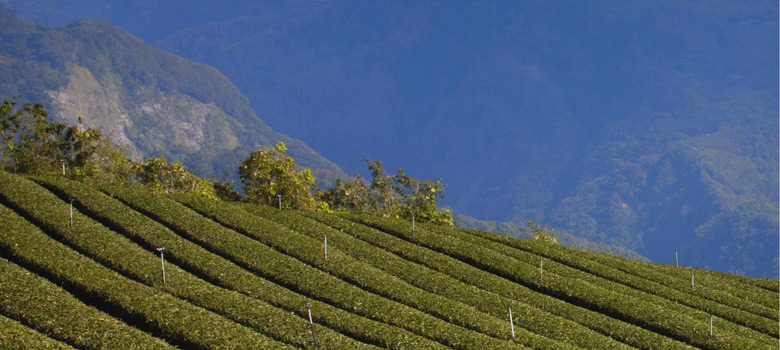
Life
Tasting Itinerary: Taiwan
Each bao has exactly 18 pleats,” explains Ethan, our server, as he lifts the steaming delicacies from the bamboo basket. Like everyone else at the table, my immediate reaction is to count the folds. However, I know there’s no need; Din Tai Fung isn’t a place for inaccuracies. Creating the best xiao long bao (soup dumplings) in the world demands precision, patience and a large team of skilled chefs. And although there are now over 100 Din Tai Fung restaurants in several countries, including Australia, with around 14,000 xiao long bao served daily in their flagship restaurant at the base of 101 Taipei Tower, Taiwan is where it all began.
Founder Bingyi Yang was born in 1927 in China’s Shanxi Province and travelled to Taiwan as a young man in search of a job. For years he sold cooking oil in a small shop in Taipei, but when tinned oil came into vogue in the early 1970s, he and his wife looked to their heritage for inspiration and converted half the space into an outlet for homemade baos. Word of mouth travelled quickly and Din Tai Fung became a local institution.
And just as there’s an art to creating these juicy bundles of foodie joy, eating them also requires finesse. “Slurping noises are encouraged,” Ethan says as he points us in the direction of the ‘guide to enjoying the xiao long bao’ cards (translated into various languages, including English) scattered around the table. His demonstration makes it look easy. “The broth inside each bao is hot, so take care.”
Eating bao is a four step approach. Prepare the dipping sauce – one part soy sauce to three parts rice vinegar mixed with slivers of young ginger. Using chopsticks, dunk into the sauce before juggling it onto a spoon, pausing to admire the pleats. Next comes the tricky part. Use one chopstick to poke a tiny hole into the skin of the dumpling to release the broth. Eat, slurp, repeat.
The perfect blend of flavour and texture together with the sense of history that comes from eating xiao long bao in Taiwan’s capital city is not easily forgotten. However, it doesn’t take long to discover there are plenty more foodie delights to tantalise the taste buds, especially for adventurous diners.
Take to the streets
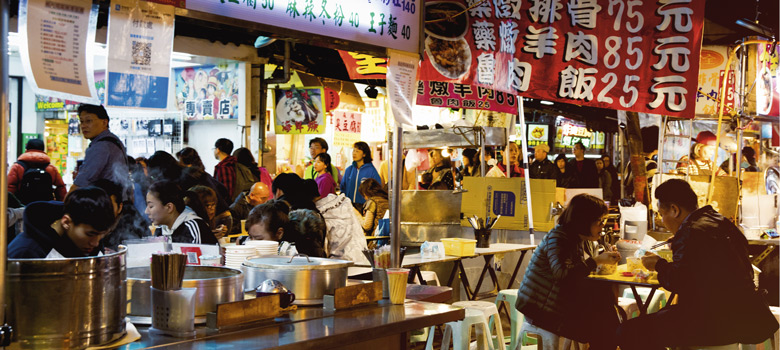
With Taiwan’s chequered history and its geographical location across the Taiwan Strait from China, its food is a fusion of European, Chinese, Japanese and Indigenous (Tsou) flavours rolled into one island around half the size of Tasmania, yet with a similar population to Australia.
In Taipei street markets are the fabric of society, the pulsating night life of the city where locals gather to eat, shop and socialise. Over 20 night markets weave through the streets and alleyways of the city. From the Shilin Night Market, the largest and most famous, with more than 500 food stalls heaving with snacks like marbled eggs, oyster vermicelli, pig blood cakes and satay sticks, to the quirky Huaxi Night Market, commonly known as ‘snake alley’ for its unique local treat – ‘snake soup’ – the markets are an assault on the senses. This is particularly true when it comes to the ‘stink’ of Taiwan’s quintessential street food, stinky tofu.
I smell it way before I see it. Walking through Raohe Street Night Market, the ‘stink’ that’s like a mixture of dirty socks left in the bottom of a gym bag for months and the most pungent of blue cheeses turns my stomach, but I’m drawn to discovering how something that smells so terrible can be a national treasure.
“Try, try,” coerces one of the many stallholders, standing over a bubbling wok of oil. It looks innocuous. Neat slabs of lightly fried crispy tofu topped with spring onions and hot sauce. It’s the fermentation (sometimes for months) in a brine made of things like milk, meat, herbs, seafood and vegetables that creates the smell. But it’s a bit like eating Parmesan cheese for the first time, once bitten all is forgiven (well, almost).
A little easier on the palate are sweet treats like shaved ice with fruit (known as baobing), traditional pineapple cake, Aiyu jelly drink (the ‘jelly’ is made from seeds of a type of local fig) and the Taiwanese invention, bubble milk tea, a refreshing cold beverage laced with small chewy tapioca balls commonly known as ‘pearls’. As one of the world’s best purveyors of tea, it’s not surprising the Taiwanese find new ways of using the humble leaves.
Time for tea
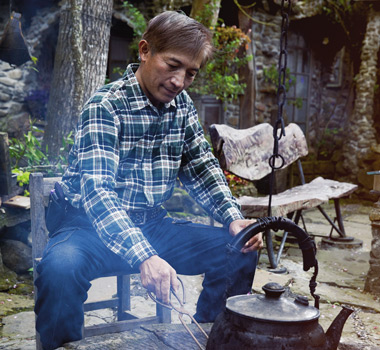
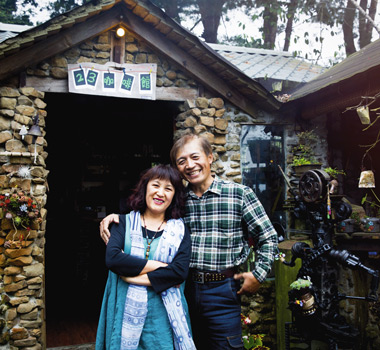
Tea is the ‘wine’ of Taiwan. From grabbing a takeaway in a street market to learning the art of a traditional ceremony in a pretty tea house, the cultivation of tea is both steeped in history, yet innovative. At the centre of the tea industry is the famed oolong variety that has thrived in the mountainous regions of the country for more than 150 years.
The Alishan region not only produces highly sought after oolong tea, its Narnia-esque-like scenery is jaw dropping. Amid a range of mountains peaks mostly over 2,500 metres high, the area is a mix of patchwork terraced tea plantations and forests filled with ancient towering cypresses (2,000+ years old), cedars and cherry blossoms.
Early one morning we join a throng of people on Alishan station for the ‘sunrise pilgrimage’ on board one of the highest railway lines in the world. Chugging through the darkness, the vintage train reaches the dizzy height of 2,489 metres at Zhushan. As dawn breaks, soft light transcends across layer upon layer of mountains with a sea of clouds floating below. Yushan (Jade Mountain), East Asia’s tallest mountain at 3,952 metres, towers in the distance and the clicking of cameras is virtually the only sound as people stand in awe. And once the sun’s up it’s breakfast high-altitude style with stalls selling drool worthy French toast and pancakes with a local delicacy, hot cherry blossom flavoured honey, and warming cups of tea.
Alishan is also renowned for indigenous flavours. With a history dating back thousands of years, around 6,000 Tsou (one of Taiwan’s main Aboriginal tribes) live in traditional villages dotted throughout the region.
Nestled into the side of a hill in Leye Village, A-Jiang has spent the last 20 plus years building the traditional Tsou style house he and his wife now run as a café and B&B. “I built it as a gift for my wife,” he says, giving his wife a wink. “Although it’s not complete – we soar above the horizon of the dream.”
Using materials from the land, their home is made up of a series of inviting stone and wooden huts scattered throughout equally enticing gardens.
And the food is as intriguing as the place itself. “Tsou culture is based on foraging and using the freshest ingredients,” says A-Jiang. There’s no set menu – communal banquet style dinners showcase Aboriginal cooking over a fire with a constant stream of dishes like steamed fish on a bed of crispy noodles flavoured with local wasabi (grown throughout the region) and sticky rice served with pork and mushrooms, all washed down with millet wine that tastes rather like sake, but sweeter.
Treasured village
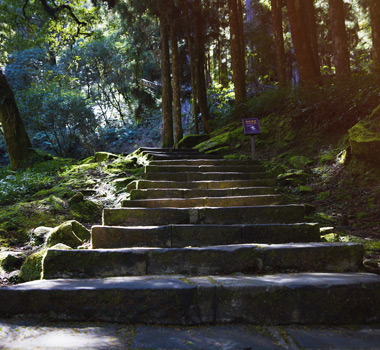
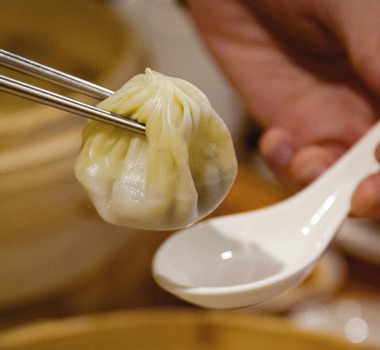
Close to Taipei, Jiufen is another gourmand’s village. Clinging to the side of a hill with views stretching to the Pacific Ocean, cobbled streets snake past artists’ studios, antique shops, tea houses and market stalls.
Geographically and historically steeped, Jiufen was once at the centre of gold mining in Taiwan, but after WWII and the decline of the mining industry, it faded from the limelight.
Through being the inspiration for two movie masterpieces, “A City of Sadness” and “Spirited Away”, depicting Taiwan’s history, the town has seen a resurgence of popularity with local and international visitors. And then, of course, there’s the food.
Jiufen is a place for grazing and paying attention to the specific flavours. In the space of a few hours I’m transported into a type of foodie euphoria as I wander from vendor to vendor exploring dishes like sweet chewy taro balls (the local speciality), pork jerky sliced as fine as silk, tempura king mushrooms (sublime), kurobuta sausages, juicy mountain pig meat served on sticks and ‘three cups chicken’ a simple, tasty local institution.
It seems that anywhere in Taiwan, food is at the centre of its fascinating culture.